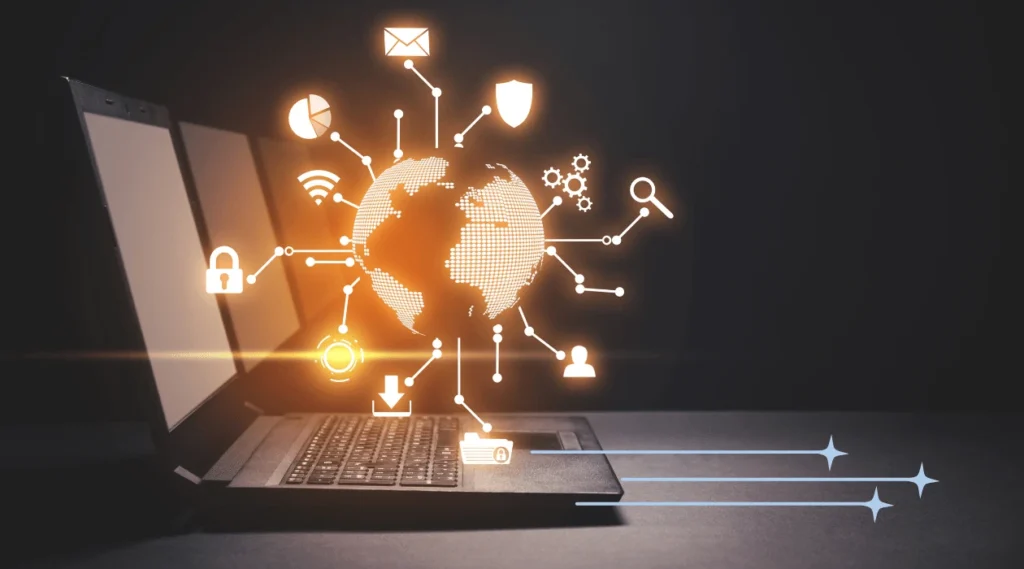The Growing Role of Technology in Healthcare

Softensity Leadership Series: A conversation with Dr. Kimberly Singh and Dr. John Sudick about the impact of tech in healthcare.
By Softensity
What is the role of technology in healthcare? How can it enable healthcare practices? And do some doctors really view technology as a threat? Softensity’s Monika Mueller sat down with Dr. Kimberly Singh, Chief of Plastic Surgery at Emory Hospital and co-founder of Panacea Plastic Surgery in Atlanta, and Dr. John Sudick, a dentist based in Whittier, California, to discuss the role of technology in today’s healthcare landscape.
Over the years, technology has gradually revolutionized healthcare for both patients and doctors alike. More recently, the rise of COVID has shifted the relationship that the industry has with technology. In many ways, the pandemic has accelerated digital transformation in healthcare and inspired lasting change.
“As the world simultaneously looks at technology to help us navigate the pandemic, and the medical community to get us out of it,” says Mueller, “we need both to work together to amplify how technology can enable both of those objectives.” Technology can both redefine the way that doctors care for patients, and improve care in a multitude of ways.
Improving Communication
According to Dr. Sudick, one of the most important technological advancements in healthcare is the improved communication between doctors and patients. “The most important aspect of our patient care is communication,” he says. “Without a really good way to communicate with our patients, whether they are on-site or off-site, you don’t have a good basis for a relationship, and for diagnosis.”
Dr. Sudick points out that a lot of people rarely answer their phones, and may not check emails regularly. That’s why his practice moved from a phone-based communication system to a text-based system nearly a dozen years ago. Not only is this the preferred method of communication for patients, it automates appointment reminders and communicates in a convenient, unobtrusive way.
The ability to easily share photographs has also been incredibly helpful. “That first initial impression helps us know how much time we may need to spend with a patient on the first visit,” says Dr. Sudick. Beyond keeping the lines of communication open between doctor and patient, digital technology has facilitated the sharing of medical information and files between doctors, specialists and beyond.
Embracing Telemedicine
With the closure of many medical facilities, quarantine restrictions and widespread unease about in-person visits, the pandemic ushered in a new era of telemedicine. According to Dr. Singh, telemedicine was always on the horizon, but her practice didn’t take the plunge until the pandemic forced the issue. And now that it’s established, telemedicine has quickly become a permanent offering.
“I think it’s a wonderful way to be able to connect with patients,” says Dr. Singh, who has many out-of-state patients. Telemedicine visits save patients near and far both time and travel, from interstate commutes to managing traffic and parking within the city. Telemedicine options can also ease the strain on elderly patients, as Dr. Sudick points out in reference to his 85-year-old mother-in-law who uses a walker. And, of course, during the height of the pandemic when many facilities were closed, virtual appointments were often the only way to see a doctor.
The benefits of telemedicine extend to both patients and doctors in terms of convenience and flexibility. “I’m a busy working mother, and for me telemedicine has allowed me a little more time in my schedule,” says Dr. Singh. “Telemedicine allows doctors to personalize their schedules to take time to do things like go for a run or pick their kids up from school, which they may not be able to do in a conventional day.”
Dr. Singh looks forward to her morning of telemedicine and appreciates getting to see her patients face-to-face in a slightly more relaxed setting that provides a personal glimpse into the patient’s life.
Fostering Collaboration With Colleagues
Technology has played an important role in cultivating interpersonal collaboration with other physicians and fostering supportive communities — especially during the pandemic. “The pandemic collapsed medical silos because it really had to,” says Mueller. “Through social media or messaging platforms, doctors with diverse backgrounds were able to pool knowledge and information around COVID-19, and also emotionally support each other.”
Both Dr. Singh and Dr. Sudick have leaned on platforms and other messaging applications during the pandemic. Dr. Sudick points to the tremendous amount of research he does, both around COVID-19 and beyond. He relies on his email network to both share new information that he discovers, get feedback from his colleagues, and to learn information from others in his community as well.
Dr. Singh’s practice uses a platform called Doximity for both telemedicine, COVID-19 information and all manner of medical research. She calls it a “one-stop shop for everything that you need as a physician” and points out that it’s also HIPAA compliant. “It’s very important for me to make sure that my patients’ information and what they’re saying to me in a video call is HIPAA compliant and safe and secure,” she explains. “These are very important considerations.”
Guidance for Tech Execs
So what should tech execs keep in mind when developing technology for the healthcare field? Both Doctors Singh and Sudick stress the importance of a collaborative approach, along with plenty of research.
“Any endeavor should truly be a partnership,” says Dr. Singh. “I would encourage technology leaders to give doctors and other medical professionals a seat at the table. I think they can really bring something new and exciting and important because the goal is the same: delivering better patient care.”
Watch the full interview with Dr. Singh and Dr. Sudick here.












